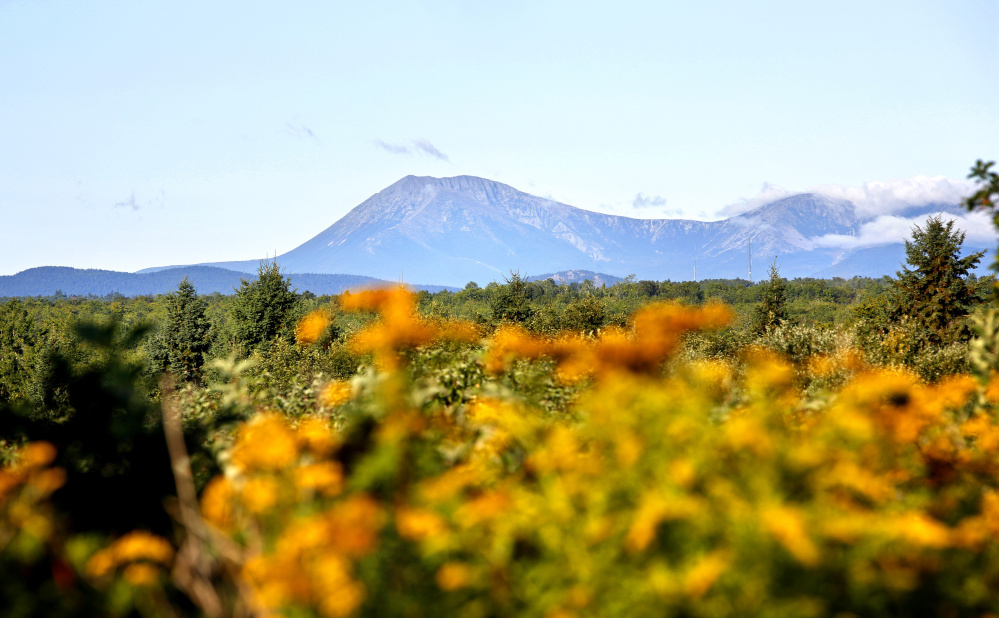If investment capital goes where it is welcome, as Gov. LePage likes to say, then the money flowing into the Katahdin region must feel pretty unwanted.
In just the short time since then-President Barack Obama designated roughly 87,500 acres near Millinocket as the Katahdin Woods and Waters National Monument, millions of dollars have been earmarked for the region, and along with anecdotal evidence of increased interest in the area, there is reason for the newfound optimism in a region that needed it.
But now all that is in danger for no good reason.
The Katahdin national monument is among 22 such designations now up for review by the Trump administration. It’s unclear what, if anything, the president can do – the Antiquities Act of 1906 gives the president power to designate national monuments, but not to rescind that designation.
Still, the move has cast a pall over the immediate success of the designation, which has turned longtime opponents into advocates and given a sense of progress to a region defined in recent years by its loss of industry.
And indeed, it is a step backward. The fight over placing the land in federal hands largely centered on the false choice between tourism and the paper industry, with the latter a stand-in for all the traditional uses of land that residents have historically enjoyed and benefited from.
Opponents argued that a national monument – or national park – would end for good that prosperous scenario. Not only would it harm the paper industry, replacing good-paying jobs with poor ones, they claim, it would also put hunting, fishing and snowmobiling at risk.
We know now that is not true. Industry and tourism can live side by side; in fact, open space and tourism amenities can help attract businesses and workers. Land-use rules can be adjusted to fit the region, with Katahdin the only national monument to allow hunting, fishing and snowmobiling.
Most of all, we know that a national monument can be its own economic engine – in only a few months, it is already drawing investment in a way the region hasn’t seen in a while.
On top of the land donated by Roxanne Quimby and her family – obtained in private sales from willing buyers for the openly stated purpose of forming a national park – and the $40 million endowment from the family for operations, there has been a flurry of activity. Real estate agents report more interest, business owners more traffic. The Butler Conservation Fund is planning a $5 million outdoor recreation facility. Matthew Polstein, who owns a series of tourism-related businesses, said he attributes to the monument a 33 percent year-to-year increase in revenue at his restaurant, as well as $70,000 more in expected revenue at his lodge for May and June alone. Polstein, a longtime part of the Millinocket business community, called it “astonishing and unprecedented.”
That is the reality. Whether it gets through to the Trump administration is another question. Last week, Quimby’s son, Lucas St. Clair, gave a congressional subcommittee an accurate and sensible view of the national monument and its effect so far.
However, he was joined by LePage, whose testimony was erratic and uninformed.
With a comment period on Trump’s review about to begin, it’s up to Maine residents to counter the governor’s misguided narrative. If you see the potential of the national monument, if you see a future for a broad-based economy in rural Maine, then speak up.
Investment has chosen the Katahdin region, and we can’t let it be driven away.
Copy the Story LinkSend questions/comments to the editors.



Success. Please wait for the page to reload. If the page does not reload within 5 seconds, please refresh the page.
Enter your email and password to access comments.
Hi, to comment on stories you must . This profile is in addition to your subscription and website login.
Already have a commenting profile? .
Invalid username/password.
Please check your email to confirm and complete your registration.
Only subscribers are eligible to post comments. Please subscribe or login first for digital access. Here’s why.
Use the form below to reset your password. When you've submitted your account email, we will send an email with a reset code.